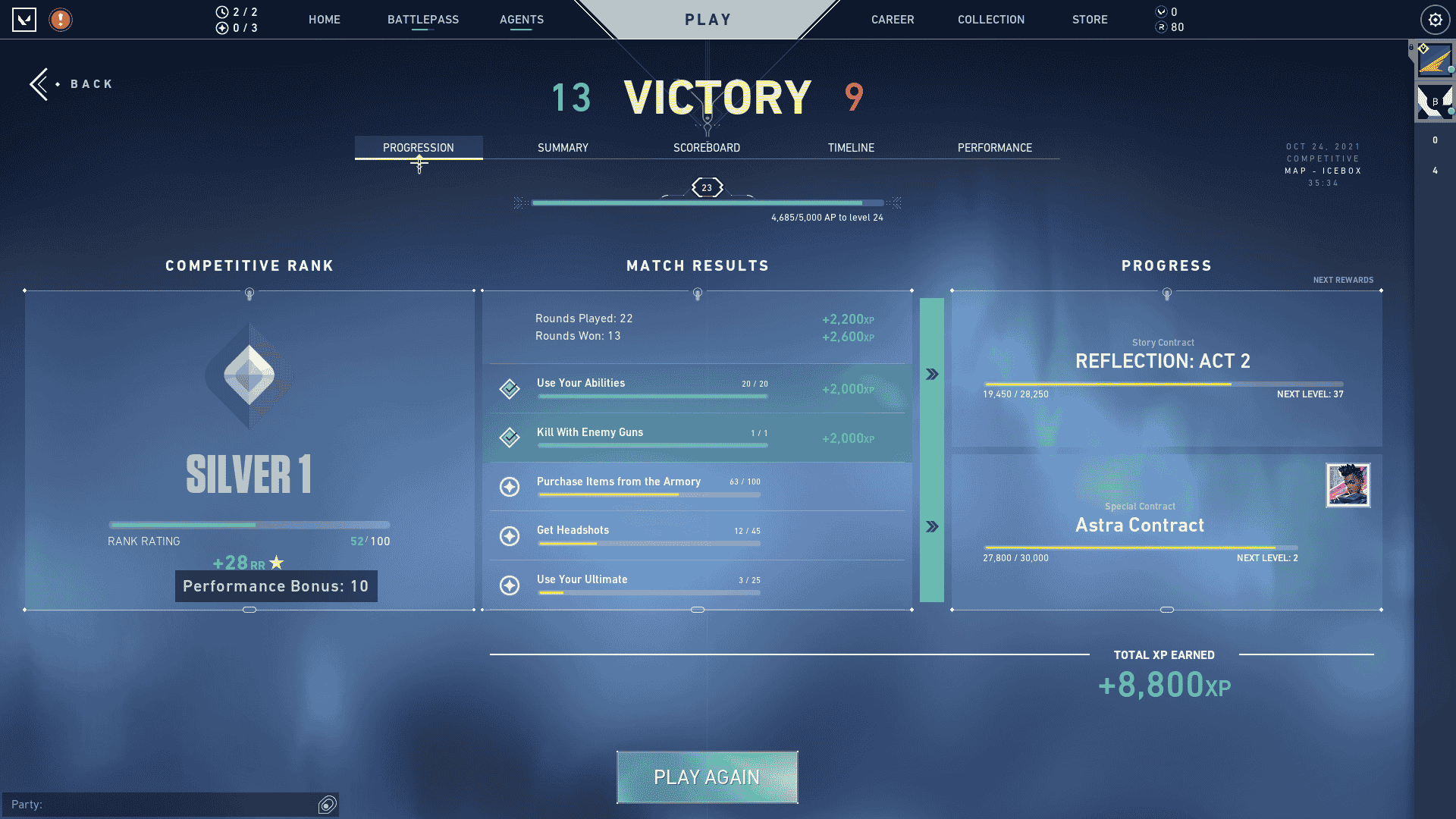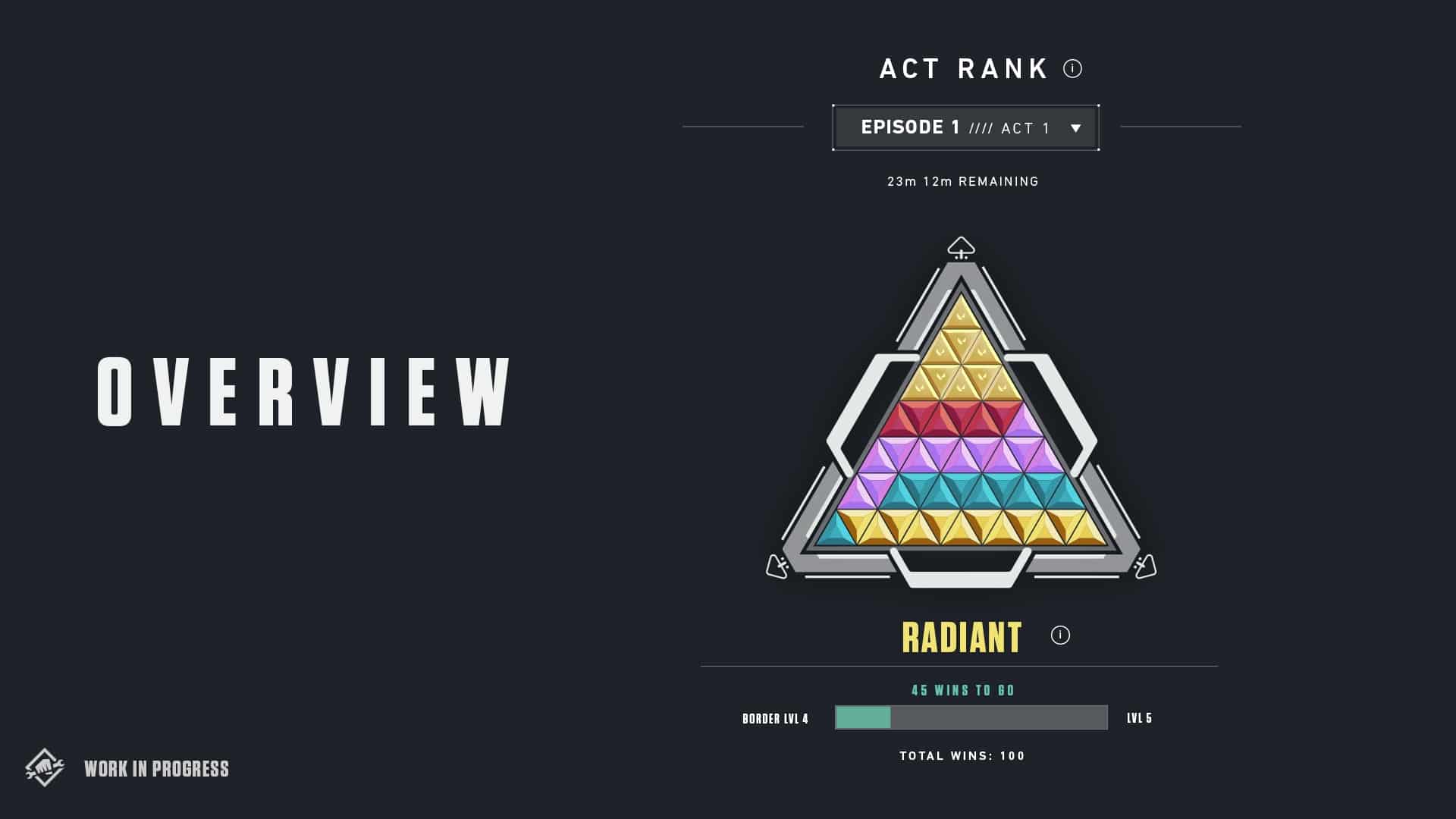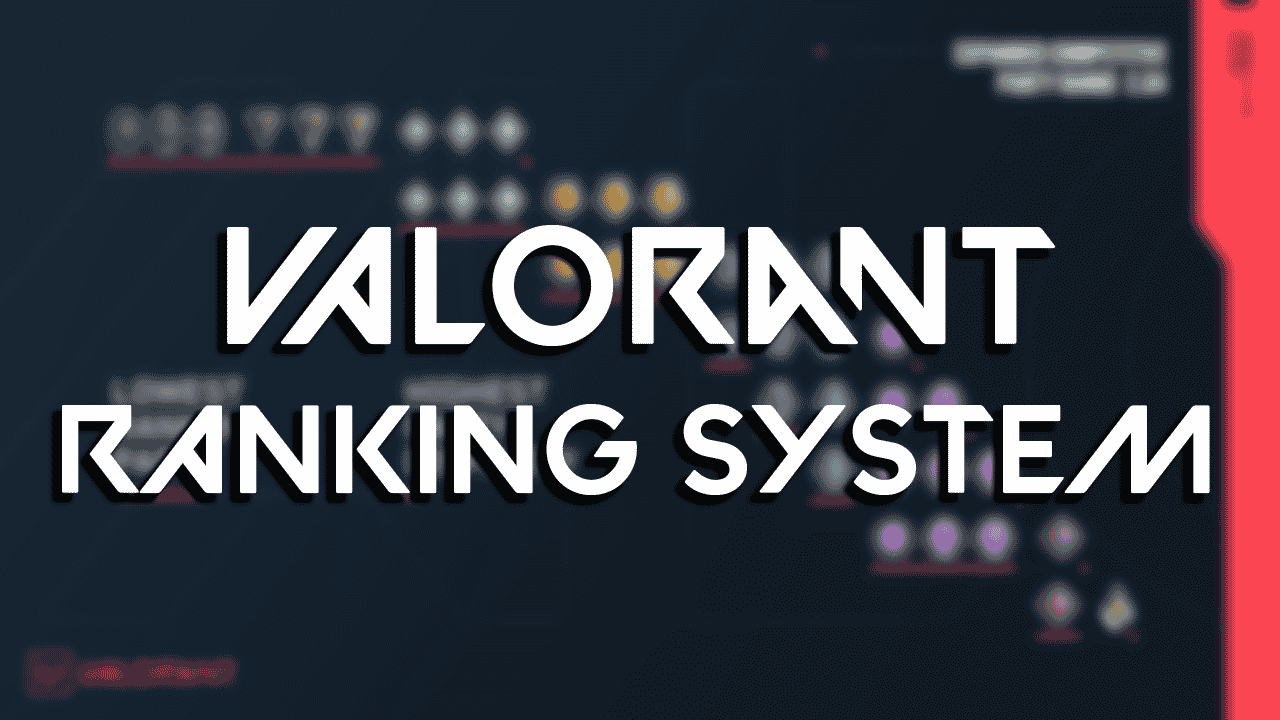The core game mode in Valorant is Competitive. It’s a competitive game after all. Where’s ranked there are ranks and ratings to distribute players according to their skill. But the ranking system algorithms are complicated and so is Valorant’s. So today let’s break down the key parts of Valorant’s ranking system including ranking up, MMR, performance bonus, what ranks can play together, and more.
List of All Ranks in Valorant
This will be familiar to you if you ever played any competitive games. Valorant’s ranks are basic and quite simple to understand. There are 9 ranks total, from Iron to Radiant and each, except for Radiant, has three divisions to make the skill spread more accurate.
These are all Valorant ranks (from lowest to highest):
| Rank | Icon |
|---|---|
| Iron 1 |  |
| Iron 2 |  |
| Iron 3 |  |
| Bronze 1 |  |
| Bronze 2 |  |
| Bronze 3 |  |
| Silver 1 |  |
| Silver 2 |  |
| Silver 3 |  |
| Gold 1 |  |
| Gold 2 |  |
| Gold 3 |  |
| Platinum 1 |  |
| Platinum 2 |  |
| Platinum 3 |  |
| Diamond 1 |  |
| Diamond 2 |  |
| Diamond 3 |  |
| Ascendant 1 |  |
| Ascendant 2 |  |
| Ascendant 3 |  |
| Immortal 1 |  |
| Immortal 2 |  |
| Immortal 3 |  |
| Radiant |  |
The Radiant (previously named Valorant) rank is a bit special. It doesn’t have any divisions and consists of the top 500 players in your region. But getting the Radiant rank is only half of the job, the other one is holding it. If you are a Radiant ranked player you have to play at least once a week to maintain your rank or you can be overtaken.
How to Unlock Competitive Mode and Get a Rank in Valorant

To get access to the competitive mode you have to reach account level 20. This can be time-consuming but it is made to prevent smurfs and trollers from ruining your experience (not that this means you will encounter them at all, but it minimizes the chance). After unlocking the competitive mode have to play placement 5 matches.
Then you will receive your first rank which is, if you are an average player, somewhere between Iron and Silver. Obviously, you can rank much higher if you are a pro, all the way up to Ascendant 1. With its complex algorithms, Valorant will give you your rank and determine your MMR (Matchmaking Rating), considering your performance in placement matches and the last 10 unrated games.
How to Rank Up in Valorant
From now on you can play Competitive and progress through the ladder of ranks. Each rank requires a 100 RR (Ranked Rating) to reach. You get RR points by winning and lose them by losing. At the beginning of your climb, the game will consider your personal performance when giving out RR and even allow you to skip ranks if you consistently play super well.
But the higher you climb the less your performance will matter, to the point when at the highest ranks only the win and the score of the match will affect the amount of RR you get.
What is Performance Bonus in Valorant

If you perform better than usual in the game you will receive an extra 5-10 RR as a performance bonus. So if, for example, you usually are in the middle of the scoreboard with 16/15 K/D and then suddenly you dropped 30 kills in the game, you will receive a performance bonus. Even if you lose a game you were hard-carrying with higher than average performance you will get a performance bonus. This way you will lose less RR than you would initially.
Performance Bonus is easy to track with kills but we’d suggest you look at your average combat score instead. Average combat score considers your kills, assists, deaths, damage dealt, and more to evaluate your contribution to the game.
Ranked Rating (RR) and Matchmaking Rating (MMR)
We have mentioned both RR and MMR quite a few times so here’s the breakdown of both and their difference as they are the key parts of the Valorant ranking system.
The Ranked Rating (RR) system is the one you see at the end of the competitive match. You earn or lose a set amount of RR based on whether you won or lost. The more you win, the more RR you earn, and the faster you climb through the ranks in order to reach your destined MMR.
The Matchmaking Rating (MMR) is an invisible rating that evaluates your skill and defines the rank you are supposed to be in. You might be Silver who is playing like Platinum. The game will recognize that and set you an inner MMR of a Platinum-ish player and try to match you with players of similar skill levels. Games’ goal is to get you to your MMR by giving you more RR for the wins and taking away less for the loss.
Once you reach your MMR the RR loss/gain will be the same (e.g, +20 for a win, -20 for a loss) because in Valorant’s eyes you are exactly where you belong. Your MMR can be increased by consistently winning games and outperforming your opponents. MMR will increase and the amount of RR you get will also increase. But that can work the opposite way too if lose more games than you win.
What Ranks Can Play Together in Valorant

Playing in a premade party/stack has its own set of rules when it comes to Competitive in Valorant. Valorant ranking system takes into account your pre-made party size and automatically optimizes your match to favor similar premade sizes and MMR on the opposing team. But that can be difficult if the rank difference on your team is too high. In case you match with players with both rank and MMR lower than your personal you will receive less RR for a win against them.
Valorant Rank Disparity
As in all competitive games in Valorant, there is a limit on rank disparity (aka what ranks can play together in a stack). The ranks are grouped and your stack can only queue up with ranks from those groups.
This is the table of what ranks can play together in Valorant’s competitive queue:
| The lowest rank in the lobby | Highest rank allowed in the lobby |
|---|---|
| Iron 1 | Silver 3 |
| Silver 1 | Gold 3 |
| Gold 1 | Platinum 3 |
| Platinum 1 | Diamond 1 |
| Platinum 2 | Diamond 2 |
| Platinum 3 | Diamond 3 |
| Diamond 1 | Immortal 1 |
| Diamond 2 | Immortal 2 |
| Diamond 3 | Immortal 3 |
| Immortal 1 | Radiant |
Note that 4-stacks are not allowed in Valorant competitive. This is mainly because the 5th player on your team is likely to have an unpleasant experience. And let’s be honest, in a 4-stack you will most likely use comms in Discord and not pay much attention to your fifth teammate.
Playing in a 5-stack in Valorant
Disparity limitations do not apply to a 5-stack lobby. You can play Valorant together with players of any rank. So technically, you can have a Bronze, Platinum, Gold, Silver, and Immortal player on the same team. However, despite the fact that the queue time can be indefinite for such a stack there is another set of penalties for you:
- If everyone in your group is Ascendant 3 or below, RR gains and losses will be reduced and adjusted based on the rank disparity in your group.
- If one or more members of your 5-stack group are Immortal 1 or above, a 25–90% RR reduction will be applied based on the rank disparity in your group.
- If one or more of your 5-stack group is Radiant, a minimum 75% RR reduction will be applied to all members in your group. Having any players in your group that are below Radiant automatically reduces your potential RR by 90%.
Act Rank Badge

An Act is a season in Valorant. It has its own battle pass, update, and rank reset. And by the end of each Act, you will get an Act badge that you can display on your player card for the next season. Don’t worry about the rank itself though, in the next Act your rank will be based on your MMR and the rank before. Unless you take a break, you will start with the same rank you had.
The badge itself is made out of 9 triangles and a rank at the front. The rank on the front is your highest rank in the past act. The triangles behind represent ranks in which you had your latest wins. Every one of those triangles is an individual game so you can have a pretty colorful badge if somehow had made it from Silver to Diamond in nine games.
Finally, there is a border around the badge. It is just a way of showing off how many wins you got in the act. It changes every 9, 25, 50, 75, and 100 wins.
Do Your Best Every Game
Now you know how the Valorant ranking system works and what affects your rank. All I can say to you from now on is: do your best when playing ranked. Don’t compare yourself to your teammates or opponents. Think about your own performance and work on improving. The key is to climb, not grind. And eventually, you will hit that Immortal rank and get that nice red Act badge.

